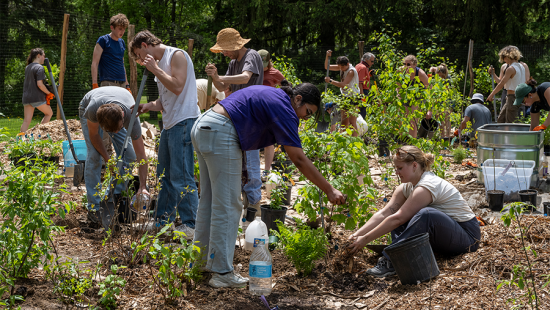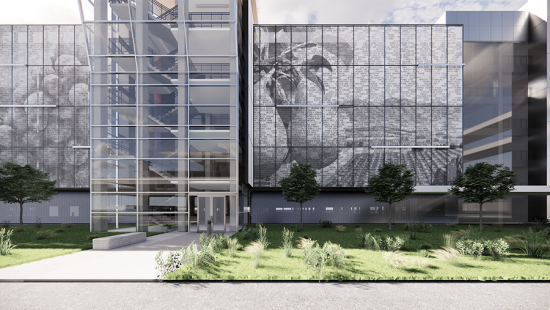Inquiry Through Making
Director of Undergraduate Studies and Assistant Professor in the Department of Art Oscar Rene Cornejo offers insights into his creative practice, approach to pedagogy, and the college's Bachelor of Fine Arts program he helps to shape and lead.
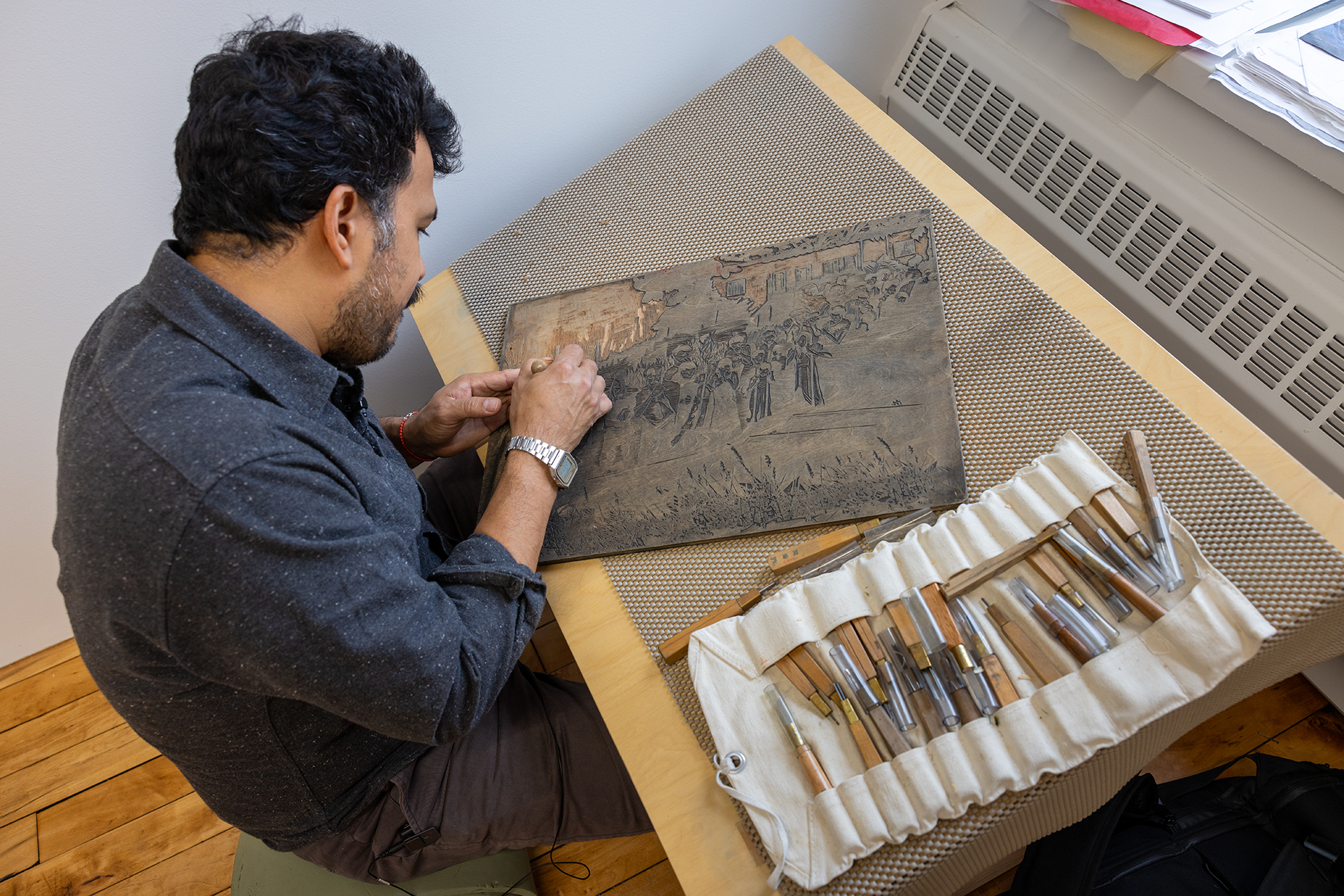
Art Assistant Professor and Director of Undergraduate Studies Oscar Rene Cornejo at work in his studio. Anson Wigner / AAP
Maple, cedar, Douglas fir, birchwood, acrylic, ash, mechanic rag, dyed cotton, rabbit skin glue, nail, woodblock print on handmade paper. These are the materials that artist Oscar Rene Cornejo, who joined Cornell as an Assistant Professor of Art in 2022, brought together in the creation of Aparecido (2017), and it's a kind of poetry that repeats in much of his work — elements drawn from nature and simple household goods mixed with specific techniques in order to explore and reflect both personal and broader social experiences.
Cornejo carries this approach to artmaking with him into the classroom and to his position as the director of undergraduate studies. "Our B.F.A. program draws out our overlapping histories as they relate to our lived experiences," Cornejo explains. Art faculty and students take "an intradisciplinary approach to integrating pedagogy, poetry, and politics concerning visual art as we connect them to civic life and perceive the 'inner' meaning of the stories we share. How does this inner meaning line up with how we grow and learn to make the world a better place? It is up to us to find out!"
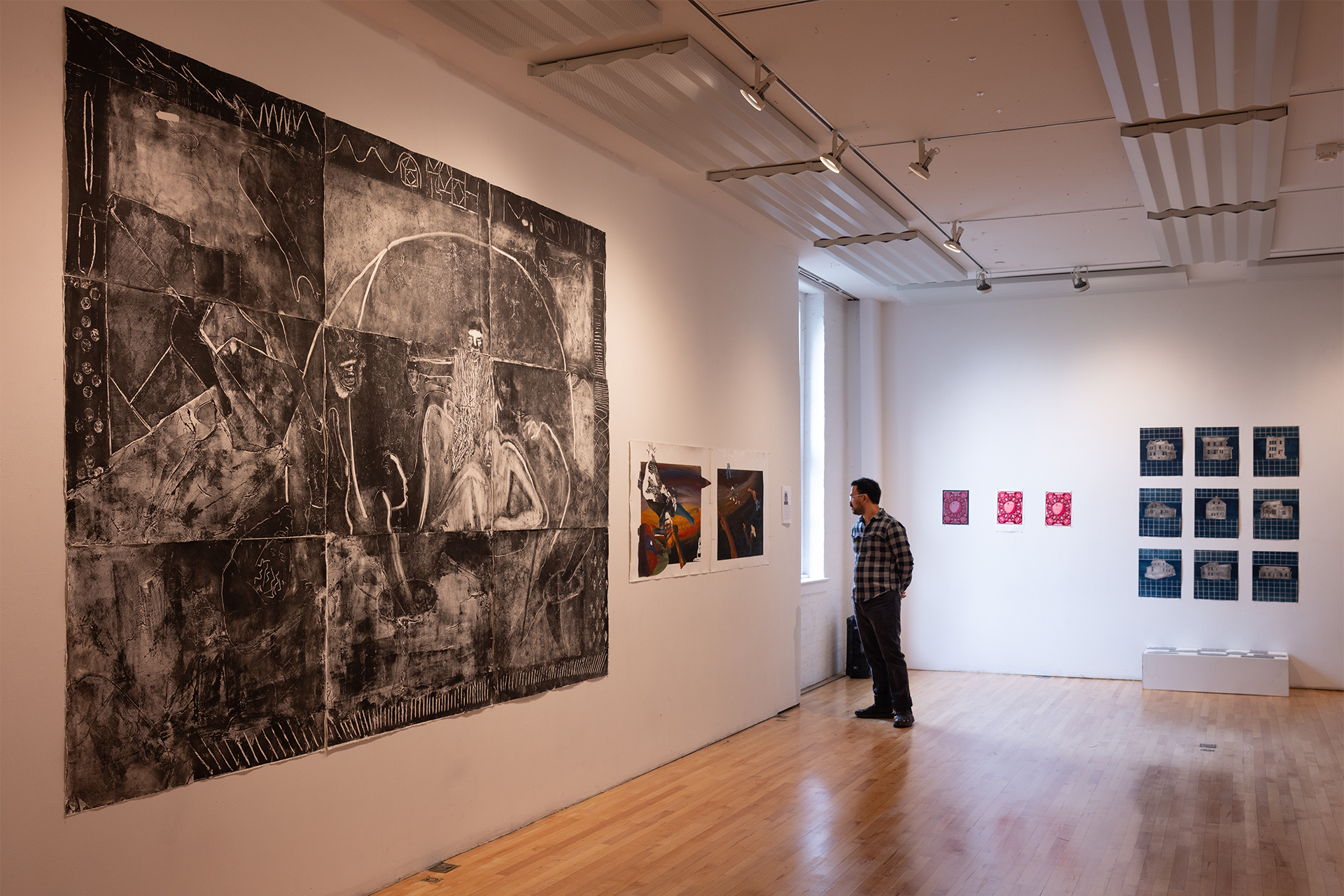
Cornejo tours COME IN—A Welcome Exhibition, curated by Visiting Critic Julianne Hunter. Anson Wigner / AAP
Thank you for taking the time to share a bit about your work, Oscar. What is driving you creatively at the moment and how is that manifesting in your practice?
Practices that have an intimate relationship to the earth resonate with me, such as fresco, clay, Indigo, Japanese joinery, and Mokuhanga (Japanese woodcut). Most of these techniques require a sensitive understanding of materials that reveal poetic relationships between humans and their connection to nature. It has me inquiring about how I can further comprehend my relationship to land, leading me to holistic practices in my studio that invest in sustainable modes of being and creating. Comprehending nature's potential demystifies traditional techniques within a contemporary setting, which has been a driving force of my artworks.
This process of inquiry through making is part of a movement that reveals one's voice while cultivating one's individual agency. Sand, soil, trees, plants, and stone are my ingredients. I am fascinated by a material's journey of transformation and use it as a methodological metaphor to human experience and history. As earth pigment is heated, it goes through a chemical transformation and crosses a variety of thresholds, to either biodegrade into earth or become petrified through time. This practice has led me to relink to ancient techniques that I see as technology. This journey of having the environment and ecosystem reveal their diversity and resilience has deep roots in the enigmatic stories of human history. These are creative expressions that have withstood the test of time.
What does the relationship between creative work and pedagogy look like for you?
Creative work and pedagogy intertwine. They culminate in awareness of a movement — a movement of experience where one's "practice" is more of a lifelong pursuit of perceiving through making. It is about living, creating, and self-awareness that grounds how we carry ourselves. All are awoken by inquiry and observation.
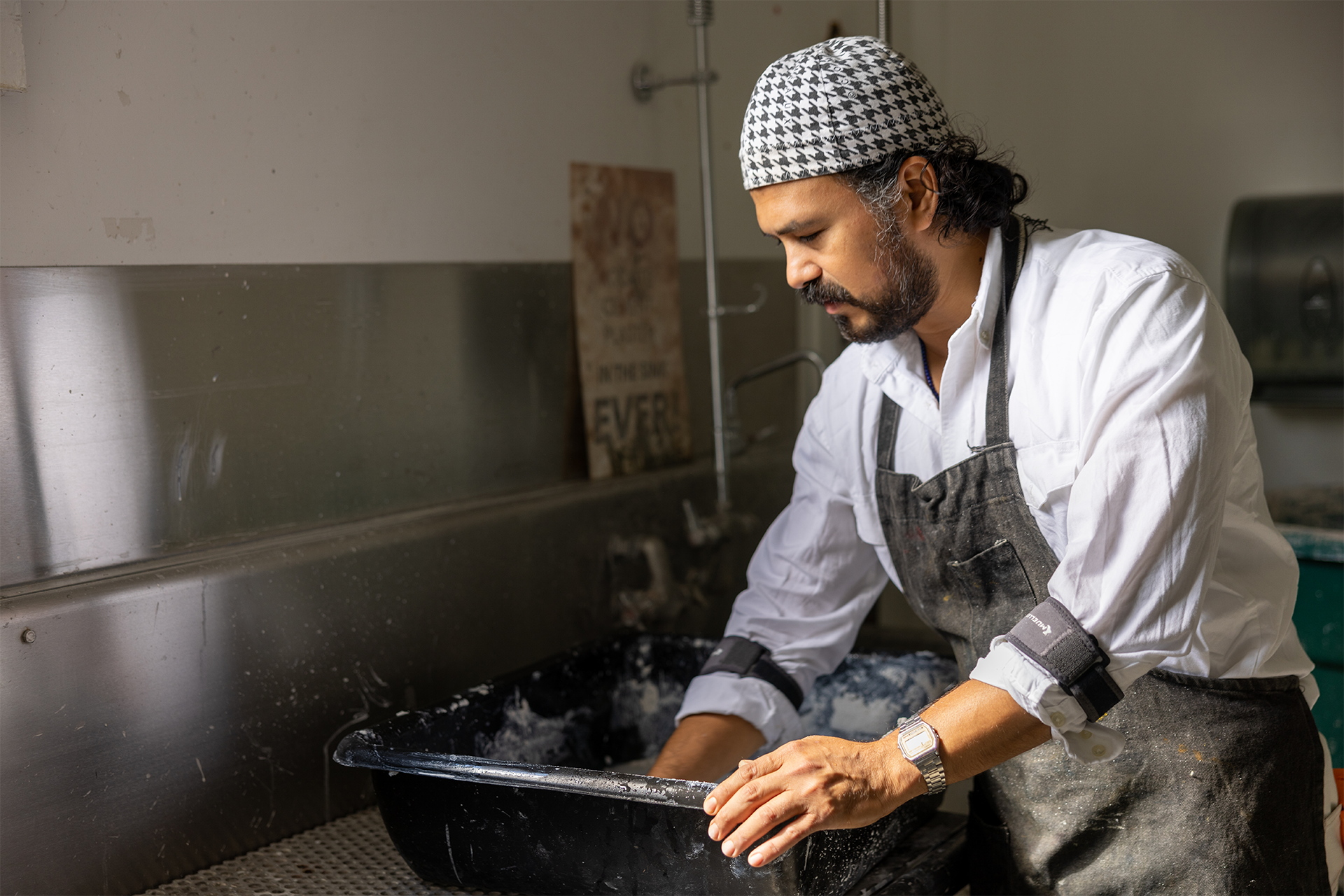
Cornejo prepares for a fresco class during the 2022 Department of Art Jubilee. Anson Wigner / AAP
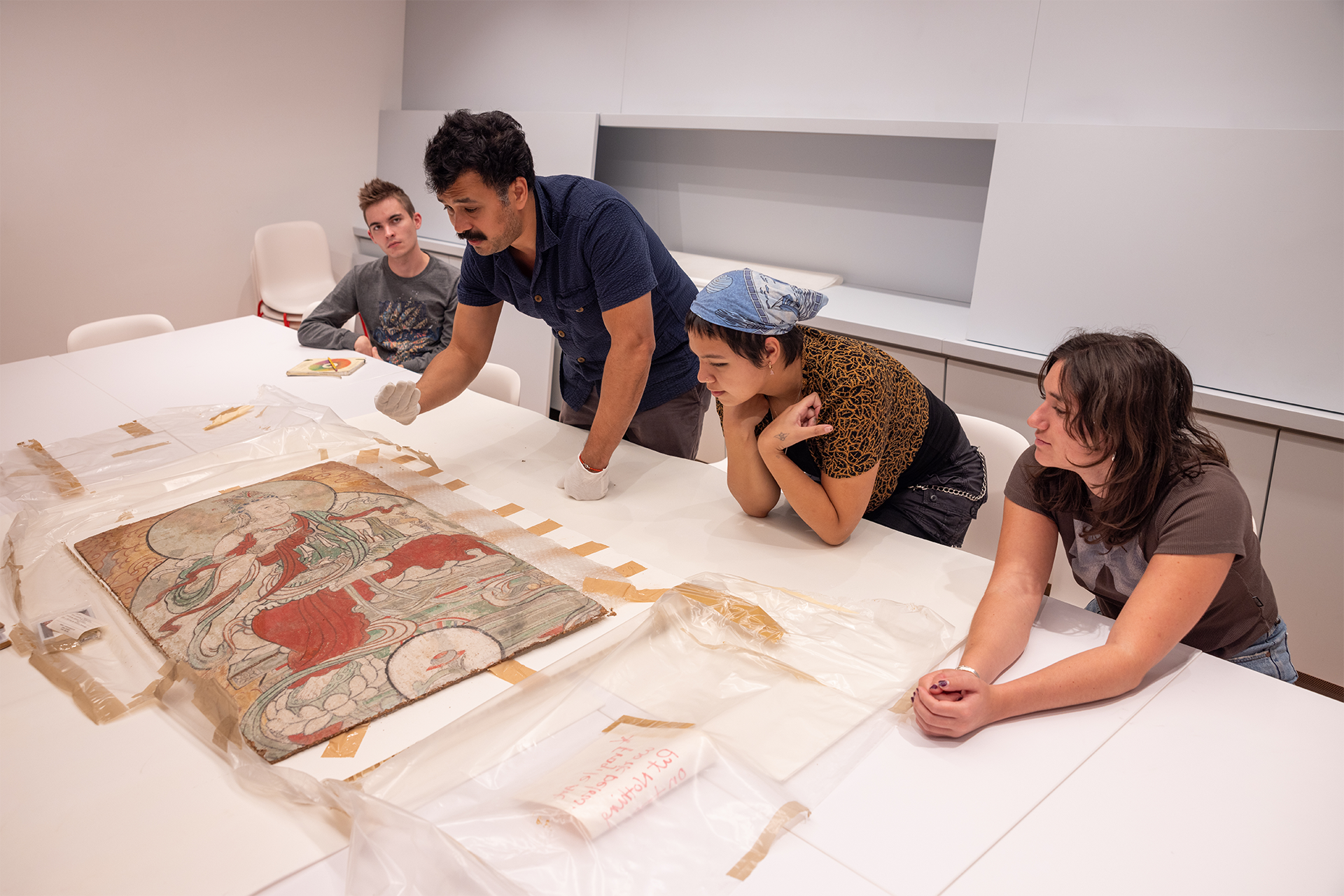
Undergraduate students studying fresco techniques with Cornejo examine examples housed at Cornell's Herbert F. Johnson Museum of Art. Anson Wigner / AAP
How is art defined at AAP? How do faculty and students explore that through the B.F.A. curriculum?
Within the Department of Art, we think expansively about what art is and we each define art for ourselves, as it is a dynamic and evolving practice of self-discovery through lived experience. These experiences propel the drive of a practice that is self-initiated and proactive.
Our B.F.A. program draws out our overlapping histories as they relate to our lived experiences. We consider an intra-disciplinary approach to integrating pedagogy, poetry, and politics concerning visual art as we connect them to civic life and perceive the "inner" meaning of the stories we share. How does this "inner" meaning line up with how we grow and learn to make the world a better place? It is up to us to find out!
How would you describe the ideal applicant to the B.F.A. program? How do you identify those qualities in candidates?
Curious. Inquisitive. Open. Observant. Passionate. Empathetic. Someone who wants to learn and grow while in a community of committed artists who are passionate about research. They usually have a strong sense of form that animates their content. This content reveals passion and contextualizes their empathetic connection to their subject matter. Their commitment reveals rigor. All these are core values we refer to in viewing candidates.
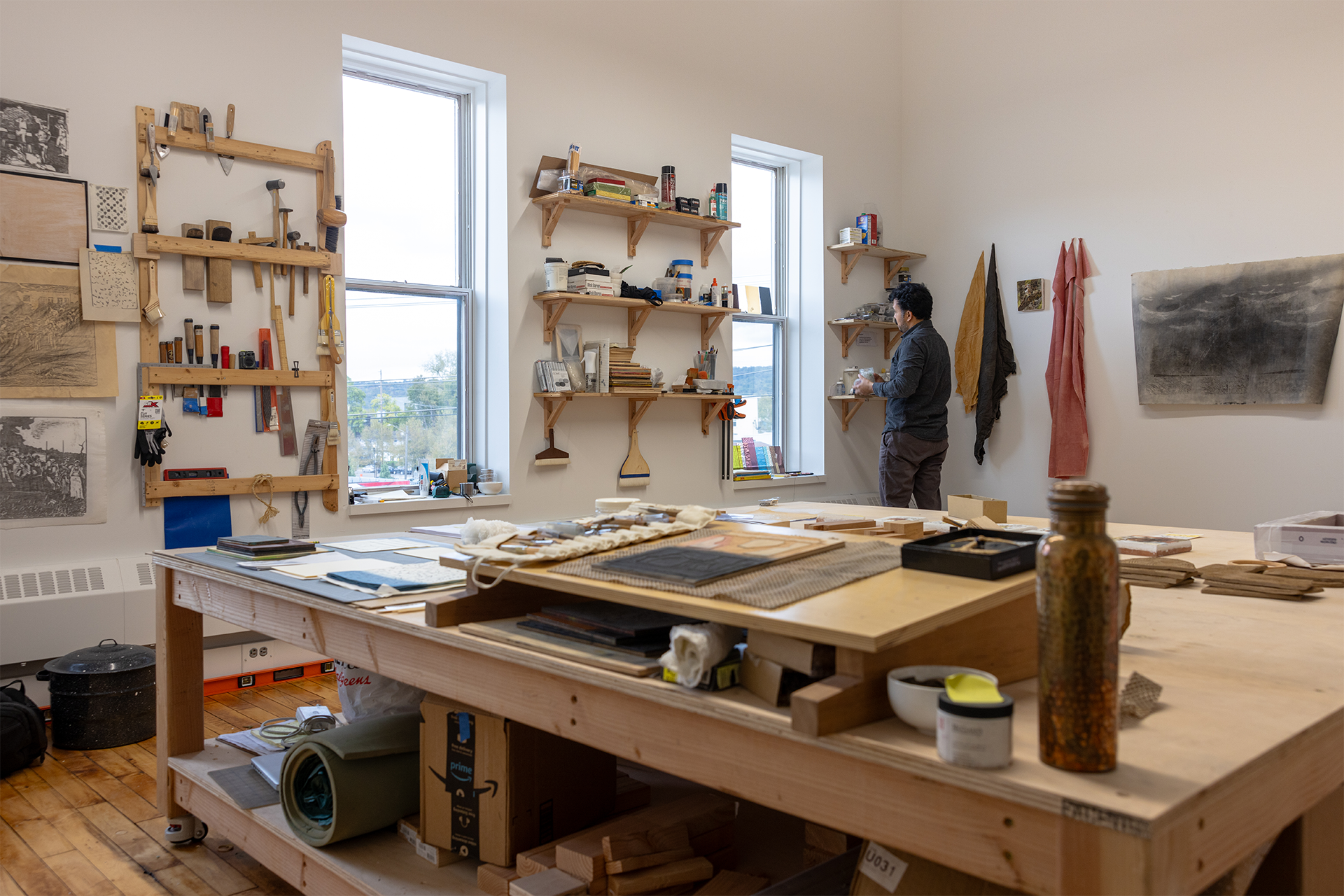
Cornejo's studio in the Sign Works Building located in downtown Ithaca. Anson Wigner / AAP



